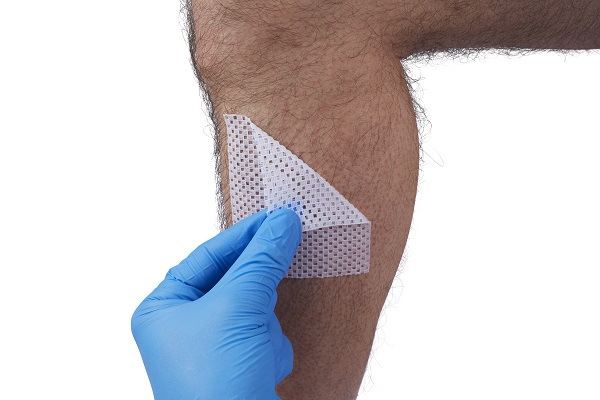Contact Layers
Contact layer dressings are thin, non-adherent sheets placed on an open wound bed to protect the tissue from direct contact with other agents or dressings applied to the wound. They conform to the shape of the wound and are porous to allow exudate to pass through for absorption by an overlying, secondary dressing. Indicated for partial- and full-thickness wounds, infected wounds, donor sites, and split-thickness skin grafts. May be used with topical medications.
Contact layer dressings are thin, non-adherent sheets made of woven or perforated material that can be placed on an open wound bed to protect tissue from direct contact with other agents or dressings applied to the wound. These dressings provide interface between the wound and the dressing, protecting fragile healing tissue, and preventing new epithelium from sticking to the dressing.
Contact layer dressings can also be used as a liner for deep wounds that need packing to ensure removal of all packing material. Contact layers conform to the shape of the wound and are porous to allow exudate to pass through for absorption by an overlying, secondary dressing. Indicated for partial- and full-thickness wounds, infected wounds, donor sites and split-thickness skin grafts. May be used with topical medications.
Contact layer dressings feature the following general performance properties and attributes:
• Wicks exudate away from the wound
• May be used with topical medications
• Protects wound base from trauma during dressing change
• Available in pads, sheets and rolls
Contact layer dressings are indicated for use as primary dressings on partial- and full-thickness wounds with minimal to heavy exudate, donor sites, and split-thickness skin grafts.
Contact layer dressings are not recommended for stage I pressure ulcers, third-degree burns, tunneling wounds, clean or debriding wounds, shallow wounds, dry wounds, wound covered with eschar or wounds with viscous exudate.
Requires a secondary dressing.
Not intended to be changed with every dressing change.
The following general warnings apply to contact layer dressings. Always refer to manufacturer information for Warnings and Precautions for a specific product.
Not recommended for stage I pressure ulcers, third-degree burns, tunneling wounds, clean or debriding wounds, shallow wounds, dry wounds, wound covered with eschar or wounds with viscous exudate.
Requires a secondary dressing.
Not intended to be changed with every dressing change.
Products
Pagination
Have a product to submit?
Be included in the most comprehensive wound care products directory
and online database.
Learn More














Follow WoundSource
Tweets by WoundSource